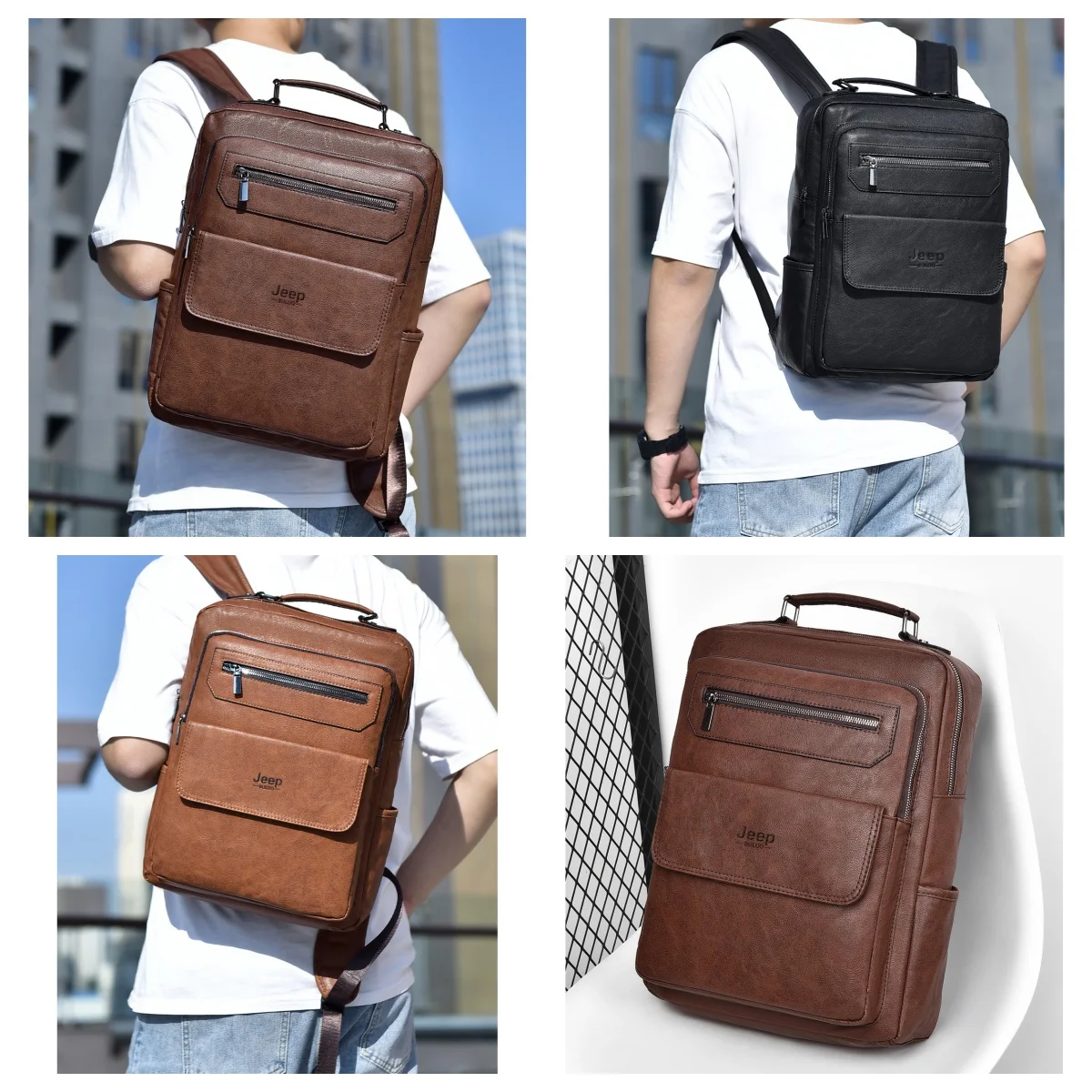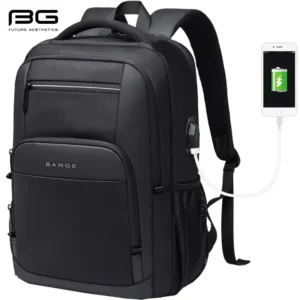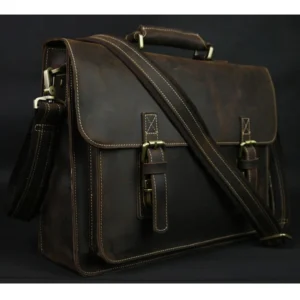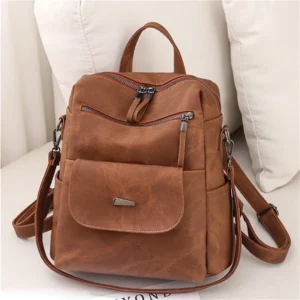A quality leather backpack isn’t just an accessory—it’s an investment that can last for years with proper care. Whether you’re navigating busy subway stations or cycling to work, your leather commuter backpack faces daily challenges that can affect its appearance and longevity. This comprehensive guide will help you maintain your leather companion’s beauty and functionality through all your daily adventures.
Understanding Different Leather Types in Commuter Backpacks
Before diving into specific care routines, it’s important to identify what type of leather your backpack is made from. Different leather varieties require specific care approaches to maintain their unique characteristics.
Full-grain leather is the highest quality option available. It includes the entire top layer of the hide with all natural markings and grain patterns intact. This premium material develops a beautiful patina over time, becoming more attractive with age. Understanding durable leather backpacks commuters rely on starts with recognizing this leather’s exceptional durability and natural water resistance.
Top-grain leather is the second-highest quality, created by sanding down full-grain leather to remove imperfections. This results in a thinner, more uniform appearance. While slightly less durable than full-grain, it offers good resistance to stains and moisture.
Genuine leather comes from the lower layers of the hide after the top portions are removed. More affordable than the options above, it typically has a shorter lifespan but can still serve well with proper care.
Suede and nubuck feature a brushed, soft surface that’s particularly vulnerable to water damage and staining. These require special care products specifically designed for their delicate texture.
Vegan leather (synthetic alternatives) mimics the appearance of animal leather but requires entirely different care routines, typically involving mild soap solutions rather than leather-specific products.
You can identify your leather type through three simple tests:
– Feel test: Full-grain leather feels natural with visible pores; lower-quality leathers feel smoother or more artificial
– Water drop test: Place a small drop of water on an inconspicuous area—quality leather absorbs it slowly, while lower grades may absorb quickly or repel entirely
– Edge examination: Look at the cut edges—premium leather reveals natural fiber patterns while lower grades appear more uniform
Many commuters prefer full-grain leather backpacks for their exceptional durability and ability to develop character over time.
Essential Leather Care Tools for Daily Commuters
Assembling the right tools makes caring for your leather backpack much easier, especially when addressing issues that arise during your daily commute. Here’s what every leather backpack owner should have:
- Microfiber cloths: Soft, lint-free cloths for gentle cleaning and applying conditioner without scratching the leather surface
- Horsehair brush: Perfect for removing surface dirt and dust without damaging the leather’s finish
- pH-balanced leather cleaner: Specially formulated to clean without stripping essential oils
- Natural leather conditioner: Look for products without petroleum ingredients, which can damage leather over time
- Water repellent spray: Choose one specifically designed for leather to provide protection without causing discoloration
- Leather spot cleaner/eraser: For quick fixes to small marks or stains that occur during your commute
- Dust bag or cotton pillowcase: For proper storage when your backpack isn’t in use
These specialized leather care products backpacks require are particularly important for commuters who expose their bags to various environments daily. For instance, having a small microfiber cloth in your bag allows you to immediately blot coffee spills before they set in, while a good water repellent spray applied regularly can prevent water damage during unexpected rain showers.
Most leather work backpacks endure significant daily stress, making regular maintenance with proper tools essential for preserving their appearance and structural integrity.
Daily Maintenance: Quick Care for Busy Commuters
A simple 2-minute routine after your daily commute can significantly extend your backpack’s life:
Empty your backpack completely each evening to maintain its shape and prevent strain on seams and zippers.
Wipe down the exterior with a dry microfiber cloth to remove dust and light soil. Pay special attention to handles and other high-contact areas.
Check for spills or stains and address them immediately—the longer they set, the harder they become to remove.
Gently brush textured leather with a horsehair brush to remove dirt from grain patterns.
Inspect and clean bottom corners where your backpack contacts surfaces throughout the day.
Quick response to issues is particularly important for leather backpacks daily use exposes to various elements. For example, if caught in light rain, blot (don’t rub) your backpack with an absorbent cloth as soon as possible, then allow it to air dry away from direct heat sources.
This brief evening routine prevents buildup of damaging substances and allows you to catch potential problems before they require more intensive intervention.
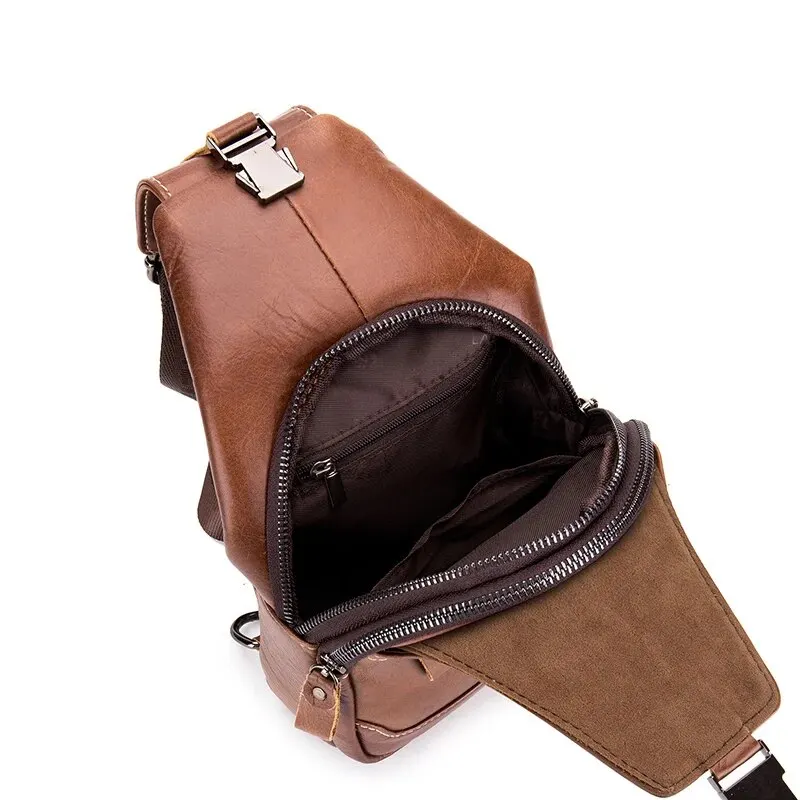
Deep Cleaning Your Leather Backpack: Complete Process
While daily maintenance handles most cleaning needs, every few months your leather backpack deserves a more thorough cleaning, especially if you use it daily. The frequency depends on your usage—heavy commuters might need quarterly cleaning, while occasional users can extend to twice yearly.
Follow these steps for effective deep cleaning:
Empty the backpack completely and shake out the interior to remove loose debris.
Test any cleaning product on an inconspicuous spot first to ensure it doesn’t discolor the leather.
Apply leather cleaner sparingly to a soft cloth—never directly to the leather.
Clean in small sections using gentle circular motions, working from top to bottom.
Pay special attention to heavily soiled areas like handles, closures, and bottom corners.
Clean hardware separately using a slightly damp cloth, drying immediately to prevent water spots.
Allow the backpack to dry naturally away from direct heat or sunlight. This typically takes 24-48 hours.
Condition after cleaning once the leather is completely dry.
Durable leather commuter backpacks respond well to proper cleaning techniques, but patience is crucial. Rushing or using excessive product can cause more harm than good.
For backpacks used in professional environments, keeping a clean appearance is particularly important. Men’s leather work backpacks often benefit from more frequent cleaning of handles and other areas that contact clothing to prevent color transfer.
Conditioning: Keeping Leather Supple Through Daily Use
Conditioning is perhaps the most crucial step in leather care, especially for bags that face daily environmental stresses. Regular conditioning prevents leather from drying out, cracking, and losing flexibility.
You’ll know your backpack needs conditioning when:
– The leather feels dry or stiff to the touch
– It shows a lighter color than normal
– The surface lacks luster
– Small cracks begin to appear in high-flex areas
To properly condition your backpack:
Start with a clean, dry backpack—never condition dirty leather.
Apply a small amount of conditioner to a soft cloth and work it into the leather using gentle circular motions.
Pay extra attention to stress points like handles, strap attachments, and fold areas.
Use sparingly—over-conditioning can saturate and damage leather. A thin, even application is best.
Allow the leather to absorb the conditioner for several hours or overnight.
Buff gently with a clean cloth to remove any excess product.
Most commuter backpacks benefit from conditioning every 1-3 months, though this varies based on climate and usage. Dry environments or frequent exposure to elements may require more frequent conditioning. Following detailed leather backpack conditioning guide techniques helps maintain the perfect balance of protection without over-saturation.
The distinctive character of vintage leather backpacks depends largely on proper conditioning that enhances rather than masks their natural aging process.
Weatherproofing: Protecting Against Commute Elements
Commuter backpacks face an array of weather conditions that can damage leather over time. Effective weatherproofing creates a barrier against these elements while still allowing the leather to breathe.
For maximum protection:
Apply weatherproofing to clean, conditioned leather for best results.
Use a leather-specific water repellent spray, holding it 6-8 inches away from the surface.
Apply in light, even coats rather than a single heavy application.
Allow each coat to dry completely (usually 2-4 hours) before applying additional layers.
Reapply protection more frequently during rainy seasons or when water stops beading on the surface.
For winter commuters, salt protection is crucial. Salt residue from treated sidewalks can severely damage leather. Wipe down your backpack with a slightly damp cloth when you arrive at your destination to remove salt before it penetrates the leather.
During summer, remember that prolonged exposure to direct sunlight can fade and dry out leather. When possible, store your backpack away from windows during work hours.
To test if your weatherproofing is still effective, sprinkle a few drops of water on the surface—if they bead up, you’re protected; if they begin to soak in, it’s time to reapply.
Proper weatherproofing is essential for long-lasting leather commuter bags that face diverse environmental challenges daily.
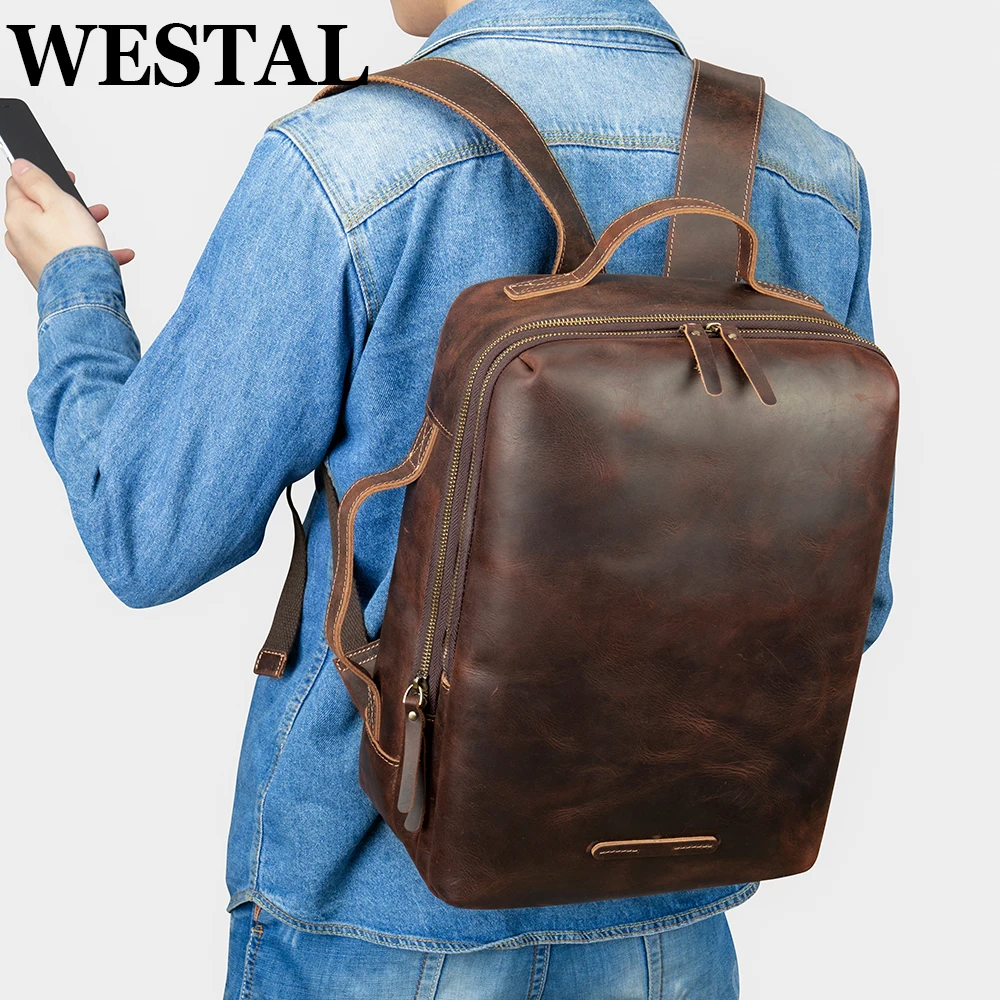
Handling Common Commuter Hazards and Stains
Daily commuting exposes your leather backpack to numerous potential hazards. Here’s how to address the most common issues:
Water and rain spots:
– Blot excess moisture immediately with an absorbent cloth
– Allow to dry naturally away from heat sources
– If water spots form, lightly dampen the entire affected area to even out the appearance
– Apply conditioner once completely dry
Coffee and beverage spills:
– Blot immediately—never rub
– Use a slightly damp cloth with mild leather cleaner
– For stubborn stains, create a paste with baking soda and water, apply gently, then wipe clean
– Condition after the area dries
Ink transfer:
– Act quickly—fresh ink is easier to remove
– Dab (don’t rub) with alcohol-free baby wipes or a cloth slightly dampened with leather cleaner
– For persistent stains, consult a leather professional
Salt stains:
– Mix equal parts water and white vinegar
– Apply sparingly with a cloth to dissolve salt
– Wipe with a clean, damp cloth
– Dry thoroughly and condition
Oil and grease:
– Blot excess oil without pressing it deeper into the leather
– Sprinkle cornstarch or talcum powder to absorb oil
– Let sit for several hours or overnight
– Brush away powder and clean with leather cleaner if needed
Scuff marks:
– For minor scuffs, gently rub with a slightly damp finger
– For deeper scuffs, apply a small amount of conditioner and buff gently
Selecting the right size backpack for commuting can actually reduce exposure to hazards, as properly sized bags are less likely to be squeezed into tight spaces or placed in vulnerable positions.
Particularly for leather laptop backpacks, addressing spills quickly is essential to prevent damage to both the bag and its valuable contents.
Proper Storage During Workday and Weekends
How you store your leather backpack when not in use significantly impacts its lifespan:
During the workday:
– Place your backpack on a hook or chair back rather than on the floor
– Keep away from direct sunlight, heaters, and air conditioners
– Avoid contact with potentially staining items or surfaces
Weekend/overnight storage:
– Empty completely to maintain shape
– Stuff loosely with acid-free tissue paper to prevent creasing
– Store in a dust bag or cotton pillowcase to allow breathing while preventing dust accumulation
– Place in a cool, dry closet away from direct sunlight
Extended storage periods:
– Clean and condition thoroughly before storing
– Stuff more generously to maintain shape
– Check periodically for mold or mildew, especially in humid environments
– Consider using silica gel packets to absorb excess moisture (but don’t place them directly against the leather)
Never store leather in plastic bags, which trap moisture and can lead to mildew growth. Proper leather backpack storage techniques emphasize air circulation while protecting from dust and environmental damage.
Between trips, leather travel backpacks benefit from proper stuffing to maintain their shape and prevent creasing that can become permanent over time.
Hardware and Accessory Maintenance
While leather often gets the most attention, the hardware and non-leather components of your backpack require regular care as well:
Metal hardware (buckles, D-rings, snaps):
– Wipe with a dry cloth to remove fingerprints and tarnish
– For tarnished brass or copper, use a specialized metal polish
– Apply a thin layer of clear nail polish to hardware that’s losing its finish (but avoid getting it on the leather)
Zippers:
– Keep free of debris by brushing with a small, dry brush
– Apply zipper lubricant (not oil-based products) to sticky zippers
– Never force a stuck zipper—identify and remove the obstruction first
Fabric linings:
– Vacuum gently with a narrow attachment
– Spot clean stains with mild soap and water on a cloth, not directly applied
– Allow to dry completely before using the backpack
Stitching:
– Inspect regularly for loose threads
– Don’t pull loose threads—clip them close to the seam
– If you notice unraveling seams, address them promptly with professional repair
The functionality of leather briefcase backpacks depends heavily on properly maintained hardware, particularly for convertible designs with more complex mechanisms.
14 Inch Leather Laptop Backpack, Brown Leather Backpack, Men's Leather Backpack, Vintage Leather Backpack
Price range: $177.28 through $199.12 Select options This product has multiple variants. The options may be chosen on the product pageCarry On Leather Backpack, Roll Top Leather Backpack
Price range: $77.76 through $96.48 Select options This product has multiple variants. The options may be chosen on the product pageDesigner Men's Backpack, Men's Leather Laptop Backpack, Men's Leather Work Backpack
Price range: $158.04 through $160.04 Select options This product has multiple variants. The options may be chosen on the product page15 Inch Leather Laptop Backpack, Leather Briefcase Backpack
$332.96 Select options This product has multiple variants. The options may be chosen on the product page17 Inch Leather Laptop Backpack, Men's Leather Travel Backpack, Men's Leather Work Backpack
Price range: $106.28 through $143.88 Select options This product has multiple variants. The options may be chosen on the product pageBrown Leather Backpack, Women's Leather Backpack
$112.16 Select options This product has multiple variants. The options may be chosen on the product page
Special Considerations for Different Commuting Environments
Your specific commuting environment creates unique challenges for leather care:
Urban commuting:
– Increase cleaning frequency to address pollution and city dust
– Pay special attention to bottom corners that contact dirty sidewalks
– Consider more frequent waterproofing to protect against unexpected weather
Public transportation:
– Wipe down contact areas more frequently to prevent bacterial buildup
– Be vigilant about spot-cleaning after contact with public seating
– Use hand sanitizer before handling your backpack to reduce transfer of oils and dirt
Bicycle/active commuting:
– Choose backpacks with ventilated back panels to reduce sweat contact
– Clean more frequently, especially straps that absorb perspiration
– Allow extra drying time if exposed to increased body heat and moisture
Climate adaptations:
– Humid environments: More frequent conditioning to prevent mold/mildew
– Dry climates: Increase conditioning frequency to prevent leather from drying out
– Extreme cold: Allow leather to warm to room temperature before handling to prevent cracking
The construction of specialized commuter backpacks often includes features designed to address these environmental challenges when supported by proper care routines.

Extending Your Backpack’s Life: Professional Care and Repair
While regular home maintenance covers most care needs, sometimes professional intervention is necessary:
Consider professional cleaning when:
– Deep stains persist despite proper home treatment
– Your backpack has extensive soiling across multiple areas
– You notice mold or mildew developing
– The leather has become excessively dry or damaged
Seek professional repair for:
– Torn stitching at structural seams
– Hardware that has pulled away from leather
– Deep scratches or tears in the leather
– Lining repairs or replacement
When seeking professional help, look for specialists who work specifically with leather goods rather than general dry cleaners. Ask about their experience with leather backpacks specifically.
Cost-benefit considerations should factor in the original value of your backpack and its personal significance. Quality leather goods often merit professional maintenance that can extend their life for many years.
Selecting rugged leather backpacks with repairable construction initially will ensure that professional maintenance remains a viable option throughout the life of your bag.
Seasonal Care Routine Calendar for Commuters
Adapting your care routine to seasonal changes helps address specific challenges throughout the year:
Spring (March-May):
– Deep clean after winter exposure
– Apply leather conditioner
– Check and clean winter salt residue
– Refresh water protection for spring showers
Summer (June-August):
– Protect against UV exposure
– Clean more frequently if sweating increases
– Monitor for over-drying in air-conditioned environments
– Apply lighter conditioning more frequently
Fall (September-November):
– Apply weatherproofing before rainy season
– Deep condition before weather turns cold
– Check hardware and zippers before winter stress
– Clean more frequently as environmental conditions change
Winter (December-February):
– Increase frequency of salt residue cleaning
– Apply protective cream against salt damage
– Condition more frequently in heated indoor environments
– Allow proper drying time when wet from snow
Monthly quick-checks should include examining stress points, hardware, and overall leather condition. This seasonal approach can incorporate many DIY leather care travel backpacks benefit from, adjusting frequency based on your specific commuting patterns.
The Value of Patina: Embracing Your Backpack’s Journey
With proper care, your leather backpack doesn’t just survive—it evolves. Quality leather develops a patina over time that tells the story of your daily journeys.
Patina refers to the gradual softening and deepening of leather’s color and character through use. Unlike damage (which weakens the leather), patina enhances its beauty through:
– Subtle darkening in areas of frequent handling
– Increased suppleness and flexibility
– Development of a gentle sheen
– Unique color variations that reflect your specific use patterns
Good care doesn’t prevent patina—it ensures that this natural aging process happens beautifully rather than destructively. The rich character of well-maintained brown leather backpacks after years of use demonstrates the difference between neglect and purposeful aging.
A quality leather backpack from Summit Carry isn’t just an accessory but a companion that improves with time. Each mark and subtle color change represents another chapter in your commuting story, creating a truly unique piece that reflects your personal journey.

